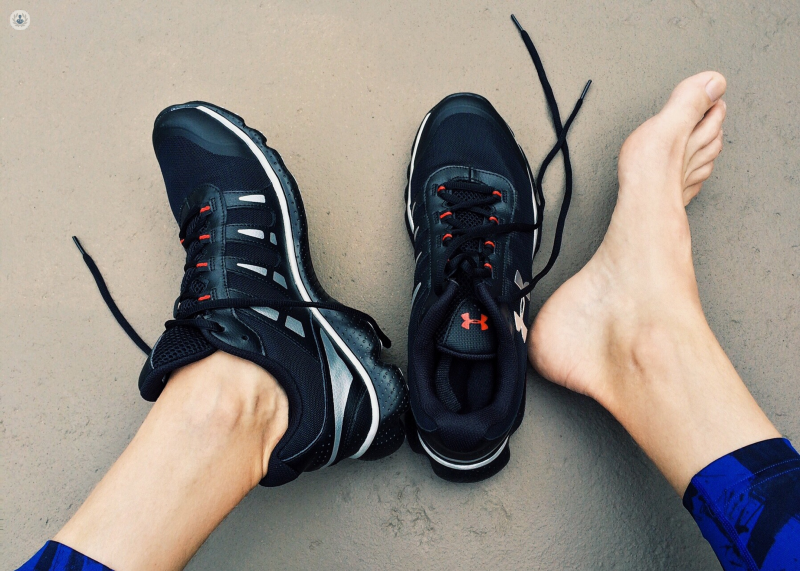Foot fungus
Dr Tatiana Welsch - Dermatology
Created on: 02-01-2016
Updated on: 05-18-2023
Edited by: Aoife Maguire
What is foot fungus (athlete's foot)?
Athlete's foot or foot fungus is a contagious fungal disease known as tinea pedis. It can occur between the toes, on the heels, toenails etc. Athlete's foot is contagious and can last for a short or long time and may even reappear over time. It is common in athlete’s, hence its name.

Prognosis
Athlete’s foot is not a serious medical concern, however, it can sometimes be difficult to cure. If you have diabetes or a weakened immune system, and you suspect you may have foot fungus, seek medical advice from a GP or specialist.
What are the symptoms of athlete's foot?
The most frequent symptom of athlete’s foot is having cracked skin peeling off between the toes or the soles of your feet. Other symptoms may include:
- itching, red skin
- oozing blisters
- discolouration or thickening of the toenails (if the fungus spreads to the nails).
What are the causes of athlete's foot?
Athlete’s foot occurs when the fungus tinea grows on the feet. The tinea fungus can be caught via direct contact with an infected person, or by coming into contact with contaminated surfaces. This fungus is usually found in warm and humid places, such as showers, changing rooms or swimming pools. Therefore, the risk factors for catching athlete’s foot are:
- Going barefoot in places like changing rooms or swimming pools
- Wearing tight, closed footwear
- Keeping feet wet for a long time
- Sweaty feet
- Sharing shoes or socks
- Having a minor nail or skin injury
Can athlete's foot be prevented?
The best ways to avoid athlete's foot are:
- Keeping feet clean and dry, especially between the toes
- Washing your feet with soap and water and thoroughly drying them afterwards
- Wearing clean cotton socks and changing them as often as necessary
- Wearing footwear at public pools, showers or changing rooms
- Wearing well-ventilated shoes
What does athlete's foot treatment consist of?
Athlete’s foot can be treated with over-the-counter (OTC) treatments. These include topical antifungal creams or powders. If these treatments do not provide relief, your GP may prescribe steroid cream or oral antifungal medication. If these do not work either, you may be referred to a dermatologist for further inspection.
